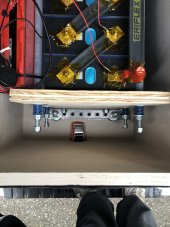skippsterr
New Member
- Joined
- Nov 10, 2019
- Messages
- 15
I know this has been beaten to death, and depends on an opinion as well all have one. I am not sure I understand this, but the comment 300kgf is mentioned and what I am trying to get from this document is what is tested/optimal compression. I want to top balance and put into production the 4 280w batteries.
Would appreciate any feedback, guidance. I want to compress w/ plywood (plastic cutting board like) and put some thin plastic separators. Bit of a noob and haven't done much with much solar, but want that in my shed now
Would appreciate any feedback, guidance. I want to compress w/ plywood (plastic cutting board like) and put some thin plastic separators. Bit of a noob and haven't done much with much solar, but want that in my shed now



